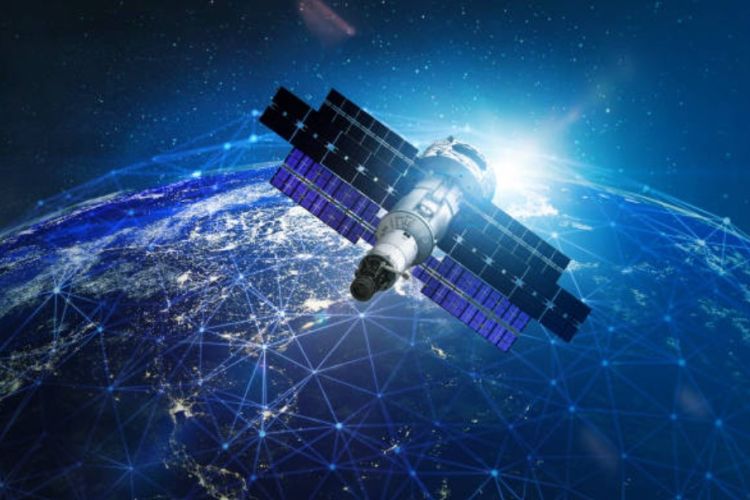India is poised to launch satellite internet services, offering hope to millions in remote villages still untouched by the country’s digital revolution. With the skies opening up for high-speed connectivity, the government is framing regulations to steer this disruptive industry—balancing ambitions of digital inclusion with concerns over sovereignty, security, and surveillance.
At the core of this push is the transformative power of satellite communications (satcom), seen as essential to bridging the digital divide in India’s vast and often inaccessible terrain. Global players such as Elon Musk’s Starlink, Amazon’s Project Kuiper, France’s Eutelsat OneWeb, and India’s own Reliance Jio are vying for a share of this emerging market. But as the competition intensifies, so too does the government’s regulatory scrutiny.
READ | Thyroid cancer in children: PM2.5 and light pollution endanger a generation
A framework for security and self-reliance
The department of telecommunications has released a draft policy to regulate satellite internet services, aimed at aligning the sector with India’s strategic goals—self-reliance, data privacy, and national security. The guidelines mandate indigenisation efforts, requiring satcom providers to submit phased manufacturing plans and ensure that at least 20% of ground infrastructure components are made in India within five years of commercial launch.
Critics, however, argue that this indigenisation push is more symbolic than substantive. The requirement to tick the box on local manufacturing may not significantly impact a sector that is still heavily reliant on imported satellite technologies.
One of the most stringent proposals pertains to data localisation. Companies must guarantee that no data originating from or destined for India is routed through foreign gateways. Real-time monitoring is mandatory, with providers required to submit undertakings that Indian telecom data will neither be copied nor decrypted outside the country. In addition, providers must establish DNS resolution and data centres within Indian territory to ensure full compliance with privacy and security norms.
India’s own navigation system, NavIC, will also be integrated into satcom terminals, with a mandatory transition deadline set for 2029. Unlike the US’s GPS, NavIC offers regional coverage tailored to India’s needs—enhancing self-reliance in positioning, navigation, and timing services.
Starlink gets clearance
Starlink, SpaceX’s satellite internet arm, has received regulatory approval to start operations in India. The company has already inked partnerships with major Indian telecom players Bharti Airtel and Reliance Jio, signalling its readiness to enter one of the world’s largest internet markets.
Starlink’s access to Airtel and Jio’s networks would potentially give it access to nearly 70% of India’s mobile user base. For Musk’s venture, India offers unprecedented scale—its user base here could surpass that in the United States, making it a crucial growth market for the company.
Surveillance, security, and civil liberties
While the new guidelines are framed around national interest, civil liberties advocates warn that they confer sweeping surveillance powers on the state. The rules call for the creation of Special Monitoring Zones—extending 50 kilometers inland from India’s borders and up to 200 nautical miles into its Exclusive Economic Zone. In these zones, law enforcement will have real-time access to user activity.
Furthermore, providers must supply real-time geolocation data—including latitude and longitude—of any user device, fixed or mobile, upon request from authorised agencies. Foreign or unregistered devices connecting to satellite networks from within India must also be flagged.
The regulations allow the government to direct service providers to suspend access for individuals, groups, or geographic areas during times of conflict or emergency. This clause, while justified as a national security measure, has raised alarm among privacy experts who argue that unchecked surveillance may infringe upon freedom of expression and data rights.
Why satcom matters for India
India is home to 1.4 billion people, yet an estimated 670 million remain unconnected, according to a 2024 GSMA report. Rolling out terrestrial networks—especially in mountainous, forested, or border regions—is often cost-prohibitive. Satcom presents a viable alternative.
Unlike traditional telecom infrastructure, satellite internet does not require towers or underground cables. A satellite’s coverage footprint allows service to remote regions with minimal ground setup. Starlink already operates around 7,000 satellites and plans to expand to a mega-constellation of 42,000, offering near-global coverage and massive bandwidth potential. Its ability to launch at low cost via SpaceX rockets gives it a formidable edge.
Telcos shift gears
Until recently, Indian telcos lobbied hard against the entry of foreign satcom providers. But ongoing trade negotiations with the US and an evolving policy environment appear to have softened resistance. In March 2025, both Reliance Jio and Bharti Airtel signed independent agreements with SpaceX, marking a surprising about-face in their stance.
This strategic shift signals the telcos’ recognition of satcom’s potential—not just as a backup for terrestrial networks but as a cornerstone of next-generation connectivity. For foreign players like Starlink, India’s market offers the scale necessary to make satellite broadband commercially viable.
India stands at a pivotal moment in its digital journey. Satcom has the potential to democratise access to education, healthcare, and financial services. But its success will depend on how deftly the government navigates competing interests—between innovation and control, growth and regulation.
To unlock the full potential of satellite internet, the government must ensure fair spectrum allocation, competitive pricing, and robust data protection. Heavy-handed surveillance could deter investment and undermine public trust.
As the stars align for a new chapter in India’s internet story, the question is no longer whether satellite internet will arrive—but whether it will serve the people or the powers that be.

